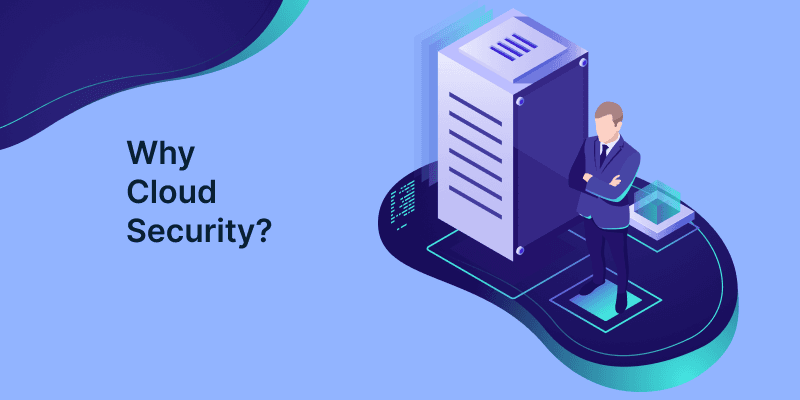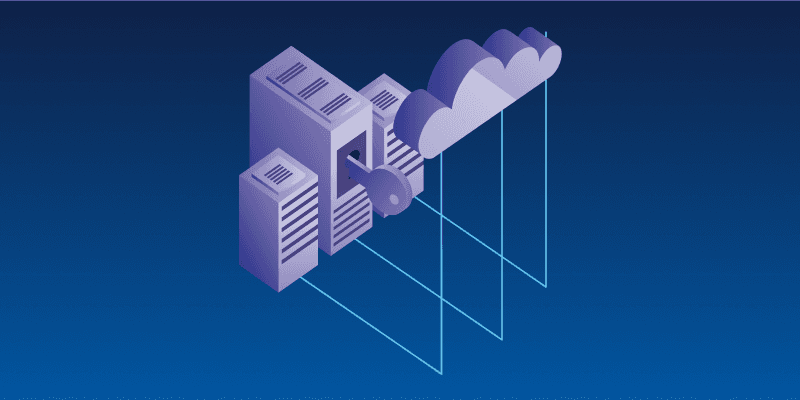Automating Cloud Security: Tools, Strategies, and Tech Stack Explained
The origin of cloud security automation

The push toward cloud security automation began as a response to the massive scale and complexity of cloud infrastructure.
As companies adopted multi-cloud and hybrid environments, security teams struggled to keep up.
Here’s why automation gained momentum:
- 80% of enterprises experience cloud-related security incidents due to misconfigurations or human error. Source: (Cloud Security Alliance).
- Over 70% of IT leaders say their security team is overwhelmed by alerts, leading to missed or delayed responses. Source: (Palo Alto Networks).
- Cloud attacks increased 48% YoY as of Q3 2024. Source: (IBM X-Force Threat Intelligence Index).
Security automation emerged to address this, offering speed, precision, and proactive threat management.
How do automated cloud security functionalities work?
Cloud security automation refers to the use of AI, machine learning, and automated tools to handle repetitive, complex, or time-sensitive security tasks in cloud environments.
It replaces manual configurations, constant human monitoring, and rule enforcement with intelligent, self-operating systems that can:
- Detect threats.
- Respond instantly to breaches
- Enforce security policies consistently
- Eliminate human error in routine checks
Rather than relying solely on human analysts to interpret thousands of alerts per hour, security automation leverages smart systems to prioritize, act, and even remediate without delay.
Curious about how core technologies like hypervisors support cloud automation? Explore our post on hypervisor security in cloud computing.
Why is automation critical for cloud security?
Let’s compare traditional cloud security processes with automated approaches:
Key Benefits of Automating Cloud Security

Automating cloud security isn't just about reducing manual effort; it's about enhancing accuracy, scale, and response times across your cloud infrastructure.
Here are the top benefits:
1. Faster Threat Response
- Automated systems can detect and mitigate threats in milliseconds, far faster than human-led responses. Tools like AWS GuardDuty, Azure Sentinel, and Palo Alto Cortex XSOAR react.
2. Minimized Human Error
- Over 90% of cloud breaches stem from misconfigurations and manual oversight. Automation enforces best practices and eliminates repetitive configuration mistakes.
3. Continuous Compliance
- Frameworks like HIPAA, PCI-DSS, and GDPR require continuous monitoring. Automated systems track and report compliance posture around the clock; no need to wait for audits.
4. Cost Savings
- Fewer breaches, less downtime, and reduced workload on security teams directly translate into reduced operational costs.
Tools & frameworks for cloud security automation
Below are widely used platforms for automating cloud security:
Steps to build automated cloud security
1. Integrate security into the development lifecycle.
- Begin by incorporating security checks and automated testing into the Continuous Integration/Continuous Deployment (CI/CD) pipeline.
- This step ensures that security vulnerabilities are identified and addressed early in the development process, reducing the risk of deploying insecure applications.
Learn more in our guide to cloud-native architecture patterns.
2. Implement the principle of least privilege.
- Set up access controls that grant users and systems only the permissions necessary to perform their specific tasks.
- This step involves defining roles and assigning permissions based on the minimum required access, thereby limiting potential damage from compromised accounts or insider threats.
3. Encrypt data with strong encryption algorithms.
- Ensure that all sensitive data, both in transit and at rest, is encrypted using robust encryption algorithms.
- Automate the encryption processes to apply consistently across all cloud resources and data storage, safeguarding data from unauthorized access.
4. Enable multi-factor authentication (MFA)
- Add an extra layer of security by implementing Multi-Factor Authentication (MFA) for accessing cloud resources.
- Automate the MFA setup and enforcement across the organization to enhance the security of user accounts and protect against unauthorized access.
5. Keep security tools and systems updated.
- Regularly update all security tools, systems, and software to protect against known threats and vulnerabilities.
- Automate the patch management process to ensure that updates are applied promptly, minimizing the window of exposure to potential exploits.
6. Educate and train your team
- Develop and implement a comprehensive training program for your team on cloud security principles and best practices.
- This includes educating team members about the automated security measures in place and their roles in maintaining a secure environment.
- Regularly update the training materials to reflect the latest security trends and threats.
Limitations in cloud security automation
1. Initial setup and configuration
- Setting up and configuring automated security tools can be complex and time-consuming.
- It requires a deep understanding of both the cloud environment and the security tools being implemented.
2. False positives and negatives
- Automated systems may generate false positives, flagging non-malicious activities as threats, or false negatives, missing actual threats.
- Fine-tuning these systems to balance sensitivity and accuracy can be challenging.
3. Dependency on technology
- Over-reliance on automated tools can lead to a lack of human oversight and intervention, potentially allowing sophisticated threats to go unnoticed.
- Human expertise is still essential for interpreting complex security incidents.
4. Integration challenges
- Integrating automated security solutions with existing systems and workflows can be difficult.
- Compatibility issues may arise, requiring additional resources to resolve.
To understand the role of programming and configuration in setting up cloud security tools, check out our post on programming languages for cloud computing.
Practical applications of cloud security automation
Cloud security automation isn’t just about reducing manual workloads; it’s about building proactive systems that prevent threats before they happen. Below are a few practical applications that demonstrate how automation secures modern cloud environments at scale:
1. Automated identity and access management (IAM)
- Manually managing user access across cloud services can quickly become unmanageable, especially in large organizations.
- With IAM automation, access is provisioned and revoked automatically based on predefined roles and policies.
For example, when a new employee joins the DevOps team, they’re automatically granted access to relevant repositories, monitoring dashboards, and cloud functions, and when they leave, all permissions are instantly revoked. This reduces the risk of privilege creep and ensures compliance with zero-trust principles.
2. Automated patch management
- Unpatched systems are one of the top causes of security breaches.
- Automated patch management tools regularly scan cloud environments for outdated software, missing security updates, and known vulnerabilities.
Case Example: Automating patch management for vulnerability response
When a patch is released, these tools schedule and apply updates across distributed systems without waiting for human intervention, ensuring rapid response to CVEs (Common Vulnerabilities and Exposures).
Let's break this down using an example of a healthcare SaaS provider that uses a cloud-native patch management tool that scans EC2 instances daily.
Security teams can’t always keep up with patch releases across distributed environments. So, when a critical vulnerability (e.g., Log4Shell) is detected, the system automatically schedules and deploys patches across affected workloads during low-traffic hours, ensuring zero disruption.
3. Security drift detection
- Infrastructure-as-Code (IaC) tools like Terraform or AWS CloudFormation help standardize deployments, but configurations often drift over time.
- Automation tools detect deviations from your security baseline and roll back unauthorized changes.
A case example: Preventing misconfigurations through automation
Manual changes to cloud resources can violate policy and introduce risk.
Let’s break this down using the example of a retail company that provisions its cloud infrastructure using Terraform.
The security team defines approved infrastructure states as code. However, when a developer manually modifies an S3 bucket to allow public access, bypassing the IaC workflow, it introduces a security vulnerability.
An automated drift detection tool continuously monitors the cloud environment.
It detects that the live configuration has deviated from the intended Terraform state, instantly reverts the S3 bucket’s access to private, and logs the event for audit and compliance tracking, all without manual intervention.
4. Anomaly-based threat detection
- Traditional rule-based detection often fails to catch novel threats. Automation powered by machine learning monitors baseline behaviors and flags unusual patterns, such as abnormal login attempts, sudden traffic spikes, or data exfiltration.
Case example: Detecting Threats Before They Escalate with ML-Based Automation
Traditional rule-based detection often misses subtle or novel threats.
Let’s break this down using the example of an e-commerce platform that implements machine learning-driven threat detection.
The system continuously learns from baseline API traffic behavior. One night, it detects a sudden 10x spike in requests to a payment API coming from unfamiliar IP addresses at 3 a.m., behavior that deviates sharply from normal usage patterns.
Instead of waiting for manual review, the automated detection system flags it as suspicious, temporarily disables the API key to prevent potential abuse, and alerts the SecOps team with full diagnostic context.
This ensures rapid, intelligent response before any damage occurs.
Summing up
As cloud ecosystems grow in complexity, security can’t afford to remain manual. Cloud security automation offers a smarter, faster, and more scalable approach to protecting your infrastructure.
From automated IAM and threat detection to patching, compliance, and drift detection, each layer becomes more resilient when supported by AI and automation.
By adopting the right tools and strategies, you not only reduce human error and alert fatigue but also ensure 24/7 security enforcement without adding overhead.
Whether you're managing a multi-cloud setup or scaling up a cloud-native platform, automation is the key to staying secure at cloud speed.
